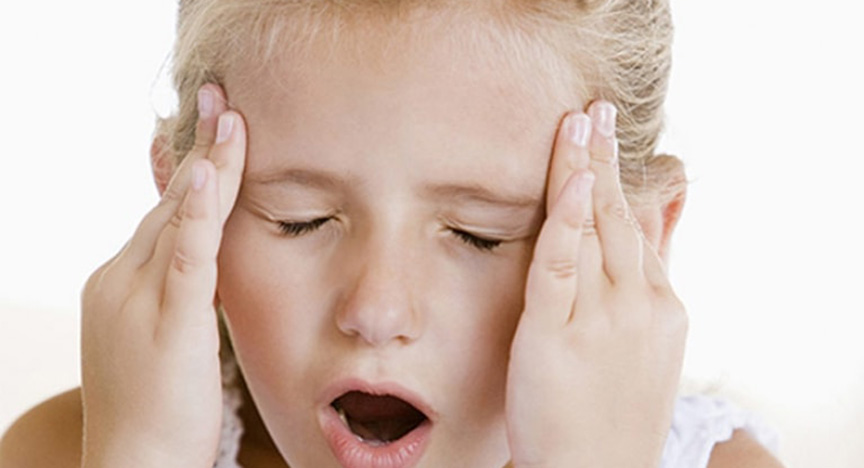
“I have a headache” is one of the most common health complaints you hear, with most people experiencing a headache at some point in their life. There are many different types of headache and many different causes, which is why they are so common.
About one-third of seven-year-old children and half of 15-year-old children have reported experiencing at least one headache.
Children can experience migraines, too. In fact, 10 per cent of school-aged children suffer migraine headaches and 50 per cent have their first one before the age of 12.
In most cases, headaches are harmless and can be treated easily and effectively (sometimes just a good night’s sleep is all that is needed) but occasionally they can indicate something more serious. Persistent headaches, in particular, should always be investigated by a doctor. Not every child who experiences a headache or a migraine headache will require a CT or MRI scan, but it’s important to know exactly what we are dealing with so we can work with you on a course of treatment that is appropriate for your child.
What is the difference between a headache and a migraine?
A headache, is as the name suggests, any ache or pain that occurs in any region of the head. Anything that stimulates the pain receptors in a person’s head or neck can cause a headache. This can include stress, muscular tension, dental problems, infections, medications, eye problems, dehydration, loud noises and injury.
A migraine is a reoccurring type of headache but is usually more severe than a typical headache and can be accompanied by disturbed vision, sensation, and speech or muscle weakness. These disturbances are called an ‘aura’. Migraines are often associated with nausea and/or vomiting, sensitivity to light and/or noise. They typically affect one side of the head but in children, however, they can affect both sides. A tendency to experience migraines is often inherited.
The most common types of headaches are tension headaches or migraine headaches (with or without an aura). These headaches are categorised as primary headaches. Secondary headaches are caused other conditions such as infections or stroke, and are rarer.
At what age can migraine headaches start?
Migraines often start in childhood or adolescence but can occur at any age. Migraine symptoms can present in different ways in children. For example, children’s migraines may, thankfully, be shorter and less severe.
How do I know if my child is having a migraine if they are too young to tell me?
It certainly can be hard to identify migraine symptoms if your child is too young to describe them to you. The most obvious sign is that your child will appear to be in pain and may look pale. Other signs and symptoms to look out for include: nausea and/or vomiting, complaining about a sore tummy, and dizziness. They may also avoid bright light or noise and just want to go to sleep.
What can trigger a migraine?
Some of the most common triggers for migraines in children are:
- dehydration
- missing meals
- illness
- not enough sleep
- bright lights (computer screens, fluorescent lights, sunlight)
- stress
Tips for managing a migraine headache
- Give a good dose of pain relief early (always consult the product instructions or your GP first if you have any questions)
- good sleep patterns
- eating regular meals
- drinking lots of water
- manage stress.
Avoid giving your child strong painkillers that contain codeine, such Painstop or Panadeine, because there is no evidence to prove they relieve migraines. More importantly, these medications can make headaches worse and can lead to what we call a ‘medication overuse’ headache.
When should I take my child to a doctor?
In the first instance, headaches and migraine can be safely treated by your GP or paediatrician. Make an appointment to see your child’s doctor if the headaches:
- do not respond to simple pain relief
- are getting worse (increase in severity and frequency) and disturbing your child’s sleep and daily routine
- are associated with fever or stiff neck or rash
- are associated with persistent vomiting
- affect their mobility, vision or ability to speak
- cause your child to regularly miss school.
It can be useful to keep a diary or record of headaches to show your doctor. Sometimes your paediatricians may refer your child to a paediatric neurologist who has an interest in headaches to see if there are any underlying causes or health issues.
Finally, it’s important to know that migraines often get better with age, but they can continue through adulthood.